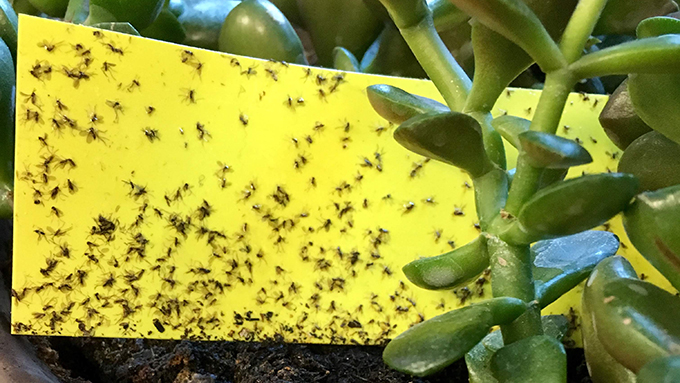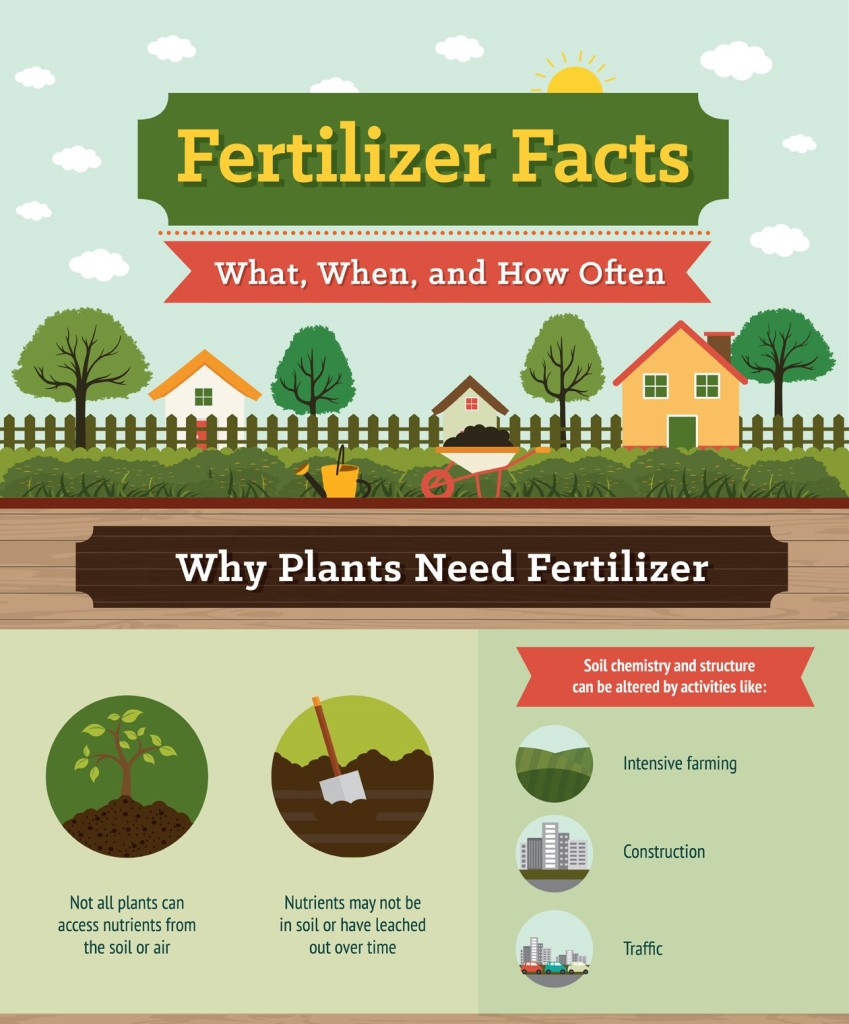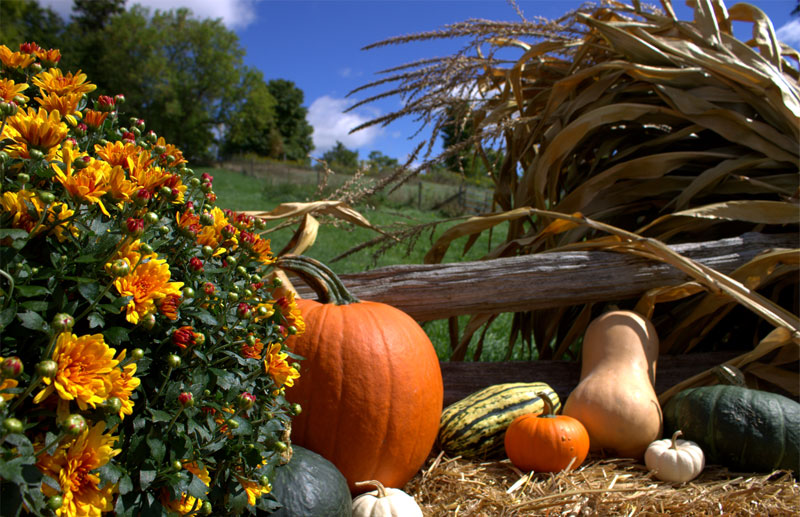
Nope – those are not fruit flies. They’re called Fungus Gnats. And they’re coming from the soil of your houseplants.
These pests feed on decaying organic matter and living materials such as root, root hairs, and stalk tissue. Fungus gnats have been known to spread detrimental mites, viruses, and fungal spores to plants.
Identification
The tiny black flies that look a lot like fruit flies (unless you see them up close) are actually gnats that hatch from the soil. You may find these adult flies buzzing around your houseplant pots or kitchen/bath area. If you do see one, go lift up some lower leaves of nearby plants and you’ll find a lot more!
Fungus gnats (Orfelia and Bradysia species), also called dark-winged fungus gnats (Sciaridae), are dark, delicate-looking flies similar in appearance to fruitflies or very small mosquitoes. Adult fungus gnats have slender legs with segmented antennae that are longer than their head.
By the way, your plants may appear normal or may exhibit only quite subtle symptoms such as yellowing leaves or extremely slow growth.

How do Fungus Gnats get into our homes?
They come inside on/in the soil of plants! The number one defense is to not bring them in, but any houseplant owner will tell you, even great greenhouses sometimes will have fungus gnats set up shop in their soil.
And those of us who place our houseplants and tropicals outside during the summer months will definitely risk bringing fungus gnats inside in the fall!
Some people even resort to hosing all soil off their outdoor potted plants and completely repotting with sterile soil before bringing them indoors in the fall. That certainly will do the trick, however, it’s a lot of work (and money for new potting soil) for someone like me with huge tropical plants such as elephant ears and banana plants.
Since they don’t bite and don’t bring diseases to humans or pets, I consider fungus gnats to be a relatively minor irritant. So I deal with any infestations reactively.
Basic defense against Fungus Gnats
Use all or as many of the following methods as you can:
Go after the adult flies
To deal with the gnats, Get some sticky cards to collect adults. This reduces the breeding population.
The larvae look like tiny white worms in the soil. You can help reduce these by watering less. Water well on a schedule and then let the soil dry out between waterings. How dry you can go depends on the species of plant.
And also target the Larvae
In the meantime, cut a potato into wedges and tuck them into the soil. The larvae should be attracted to the potato. Lift out and dispose of infested pieces until no more larvae are present.
Prevent/Reduce reproduction
- Let the soil surface dry out! Water from the base. (Did you know that overwatering is the major cause of houseplant death?)
- To prevent adults from laying eggs in the soil, you can cover the soil surface with a 1cm layer of course material like peddles, sand or perlite. Peppermint oil can also repel them.
- Researchers have found that Bounce® fabric softener dryer sheets (Outdoor Fresh Scent) repel fungus gnat adults and greenhouse producers insert dryer sheets into the soil. You could cut one in strips and add it to your pots.
Try killing them with a variety of options
- There are pesticides and biocontrols available online or in garden centres that can be used.
- One of the easiest solutions is to introduce a naturally occurring bacteria, Bacillus thuringiensis subspecies israelensis (BTI). This is used to manage mosquitoes and black flies and fungus gnats in greenhouses. It is also the active ingredient in the product called ‘Mosquito Dunk’. Within 24 hr of ingesting Bti, fungus gnat larvae stop feeding and become limp. You may wish to explore the volume of research about the safety of BTI. Our research suggests it’s a suitable product Here’s one good update
- Entomopathogenic nematodes – Steinernema feltiae are sold by various providers and these tiny worms enter the body of the gnat larvae (and many other soil-dwelling organisms) and release bacteria. This bacterial infection converts the larval tissue into a food source, on which nematodes feed, develop, and reproduce. The host pest dies within a few hours to days after infection. Example of a product containing these nematodes “Guardian”
- Hydrogen peroxide (H2O2) has been found to reduce both adult and larvae populations as well as algal growth, which supports them. Suggest 250ml (1cup) of the 3% diluted with 1000ml (4cups) of water. Canadian Consumer Safety report for Hydrogen peroxide
Resources
YouTube – Biological Control of Sciarida flies
University of California – Integrated Pest Management – Fungus Gnat identification and control PDF
Nematode Control method for Fungus Gnats – video of the nematode process
Utah State University Pest Advisory – Greenhouse Pests
http://8ff.ad6.myftpupload.com/learn-how-christmas-plants-can-thrive-and-rebloom/





About The Author: Armstrong
As an author and editor, Linda directs her lifelong love of nature and plants to concerns about our environment and how we can do better. In addition to decades of gardening experience, and training as a master gardener, Linda focuses on learning from leading science-based educators and writers, and in the process finds that she uncovers many gardening myths.
More posts by Armstrong